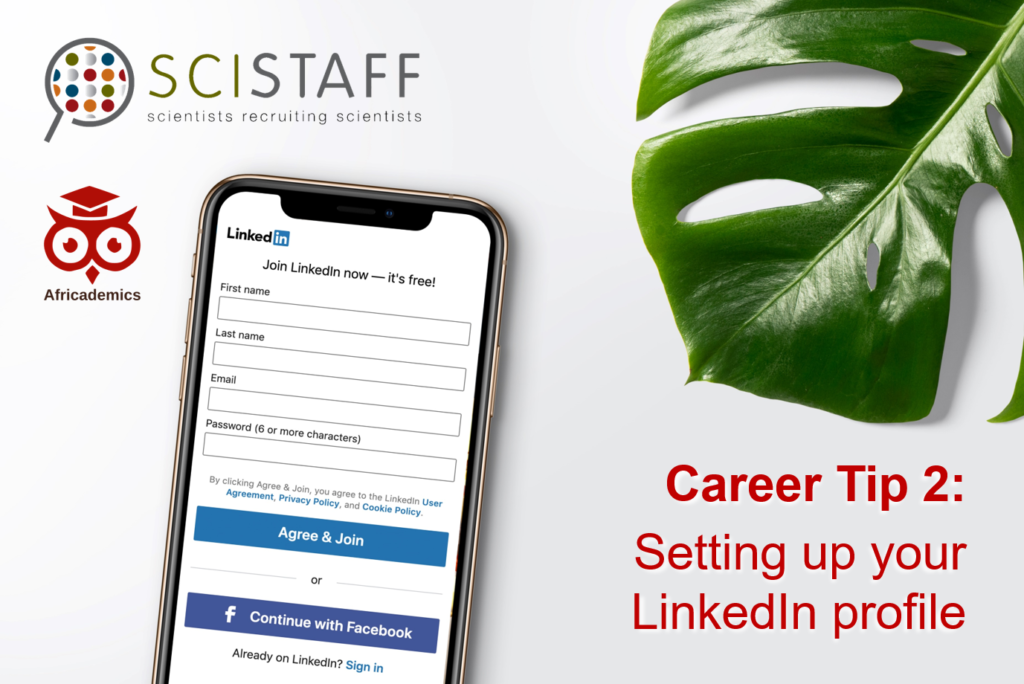
Your LinkedIn profile
LinkedIn is a great way to build your personal brand and it is a highly utilized platform by recruiters. Setting up your profile is free, although you can opt for a paid subscription with added benefits. When setting up your profile, put some effort into it as a poorly set-up profile is not of much use. Here are some tips for setting up a great LinkedIn profile.
Profile picture and background photo
Use an up-to-date good quality photo that is an accurate representation of how you normally look with, your face taking up most of the frame. A graduation photo for new graduates is great, but update it as you grow in your career. The background is another way to get people’s attention, so utilise this area to highlight what your field of study is/ was or where you are working.
Headline and summary
Use the headline as a short introduction of yourself. When writing the summary do not fall back on the regular “buzzwords”, but rather try to give an accurate but professional description of yourself. Use this area to market yourself to the LinkedIn community. What are you passionate about, what is your area of expertise, where do you see yourself going in your career? When people take the time to read the summary, they would like to learn more about you so do not be generic. Ask friends or colleagues whose opinion you trust to read this section and give some feedback.
Relevant skills
Use this section to highlight the skills you have. If you have been using certain computer software or laboratory instruments say how long you have been using it and level of expertise you have. If you had official training, include it. LinkedIn provides various methods in which you are skillset can be further supported, these include:
1. Endorsements
Remember the easiest way to get endorsement is to give them, but only give endorsement if you are certain the person does indeed have the skills they claim to have. Your integrity can be questioned if you give out undeserved endorsement. Reach out to relevant people, such as your supervisor if you are a postgraduate student, to endorse skills you have. Sometimes your endorsements can become a bit skewed in one direction and it might be necessary to remove some endorsements to ensure it your skillset remains balanced.
2. Skills assessments
LinkedIn also has various online skills assessments which you can complete for skills to become verified.
3. Recommendations
You can also ask connections whose opinion is highly valued to write recommendations for you, as with the endorsements you need to have a professional relationship with the person.
Remain active
It is important to remain active in LinkedIn, and there are various ways in which to do this with some more time-consuming than others:
- LinkedIn Learning allows to do various free or paid courses which gives you the opportunity to learn new skills which can be added to your profile.
- Take a few minutes a day to look through your feed and share relevant content, make comments or like posts. Remember, LinkedIn is the social platform for your professional persona so be very critical about you post. Always ask yourself that if a potential employer sees your profile and what you post or like would they want to employ you?
- LinkedIn also gives you the opportunity to publish non peer-reviewed articles, this is definitely more time-consuming but if you can write an article that is relevant to your field it can be a great way to market yourself.
- Follow companies and relevant influences and connect with other professionals on LinkedIn. Some of the steps to start connecting is to sync your profile with your email address book, start at University and / or work connections and expand from there. Afterwards, take a few minutes a day to do connection invites, look for people that are in your field, work for a company where you would like to work or look for recruiters that operate in the areas or locations you want to work.
Join us next week to learn how to develop your networking skills: The Do’s and Don’ts!
